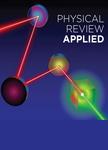版权所有:内蒙古大学图书馆 技术提供:维普资讯• 智图
内蒙古自治区呼和浩特市赛罕区大学西街235号 邮编: 010021

作者机构:Department of Mechanical and Aerospace Engineering Department of Mechanical Engineering Department of Electrical Engineering State Key Laboratory of Power System Institute for Superconducting and Electronic Materials Australian Institute for Innovative Materials Institute of Materials Swiss Federal Institute of Technology-
出 版 物:《Physical Review Applied》 (Phys. Rev. Appl.)
年 卷 期:2024年第22卷第1期
页 面:014077-014077页
核心收录:
基 金:Innovation and Technology Commission, ITC Research Grants Council, University Grants Committee, 研究資助局 Innovation and Technology Fund, ITF, (ITS/065/20, GHP/096/19SZ) Innovation and Technology Fund, ITF
主 题:Electric polarization Electrostriction Energy harvesting devices Ferroelectricity Piezoelectricity Actuating materials Amorphous materials Polymer thin films
摘 要:Piezoelectric materials produce a linear deformation in response to an applied electric field and are essential for precision-control devices. The conventional view is that polymers must be crystalline and possess remanent polarization after artificial poling to gain piezoelectricity. For the ferroelectric polymer poly(vinylidene difluoride), the required poling field is exceptionally high, up to 150–200 kV mm−1. Here, we circumvent this limitation by utilizing the elastic displacement of electric dipoles and creating a net polarization. We find that a subcoercive field of 49 kV mm−1 can induce a high piezoelectric coefficient, d33, of −33 pm V−1 in an unpoled poly(vinylidene fluoride-trifluoroethylene) film. In this case, the dielectric acts as a piezoelectric, as long as a bias electric field is applied, with its piezoelectric coefficient increasing proportionally to the strength of the electric field until polarization saturation sets in. The proposed methodology is further extended to amorphous polymers, providing an opportunity to discover alternative piezoelectrics within the dielectric family.